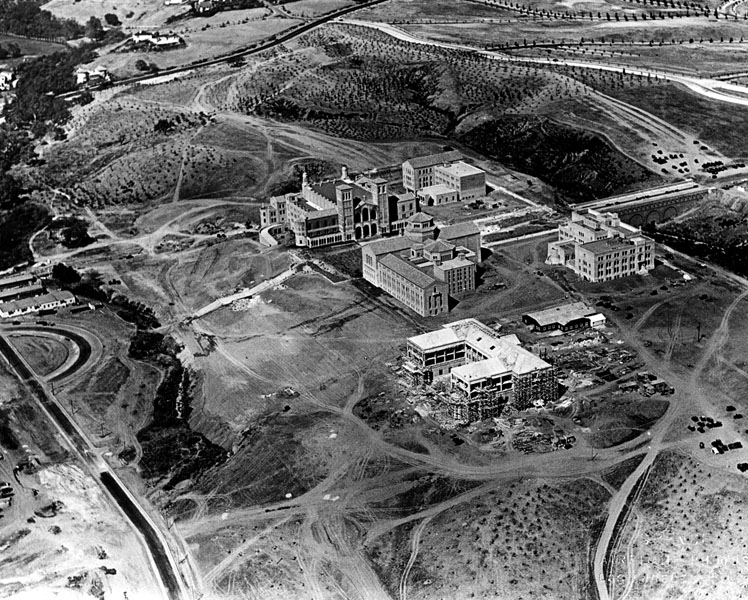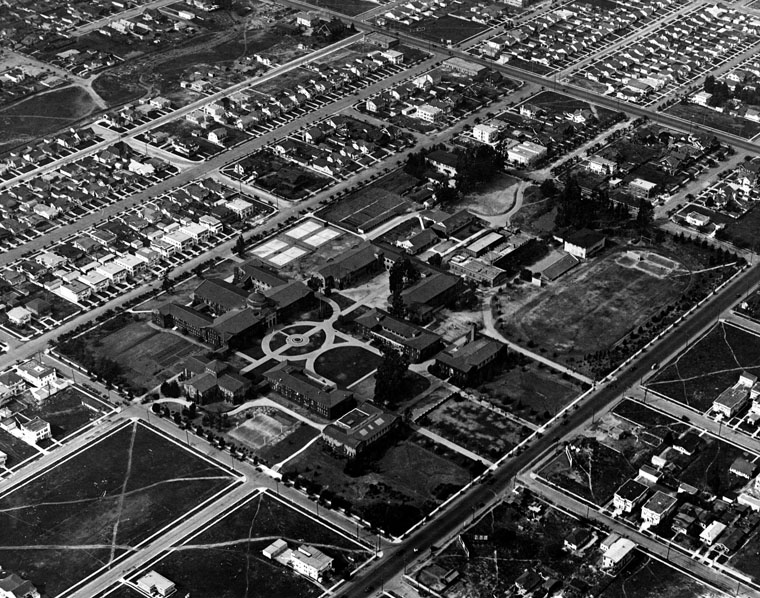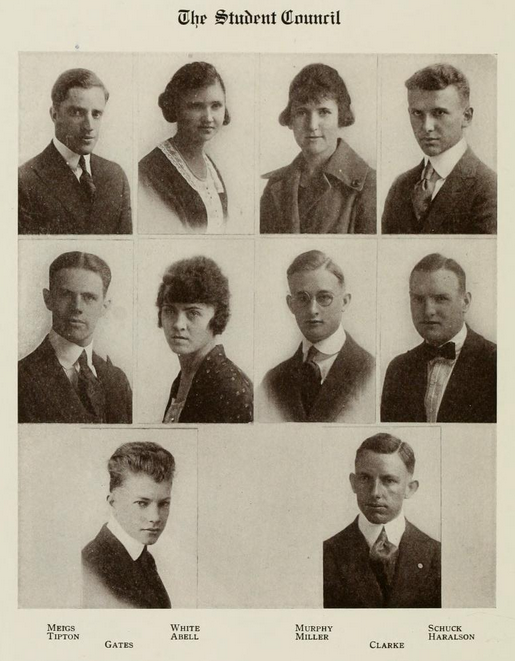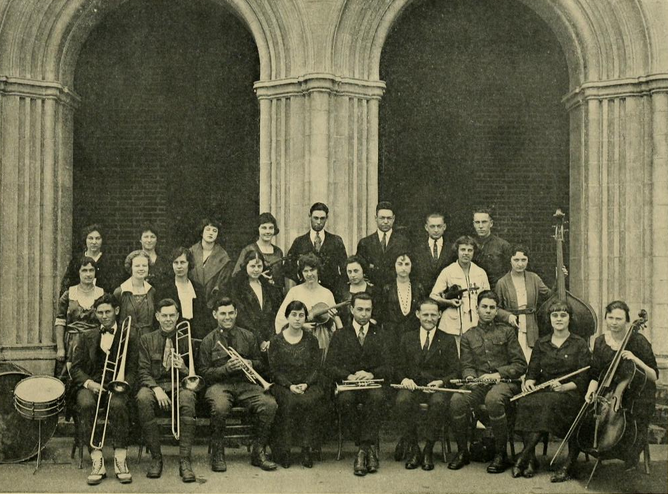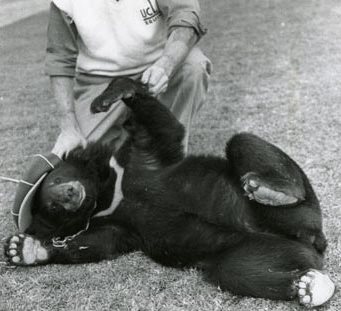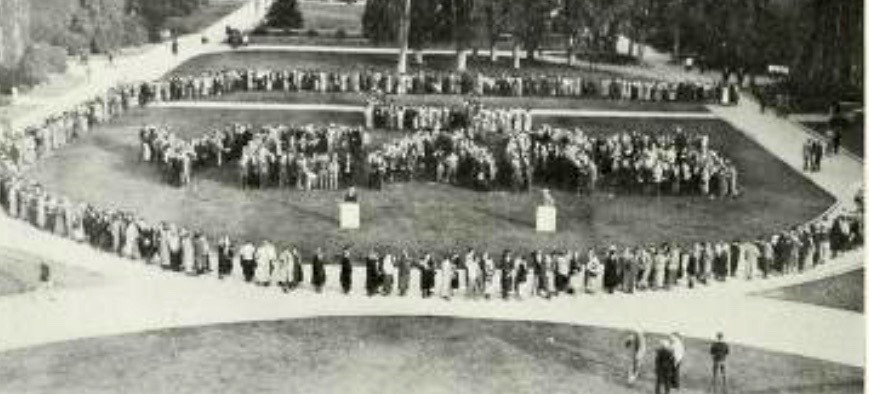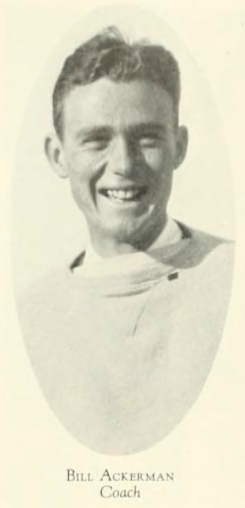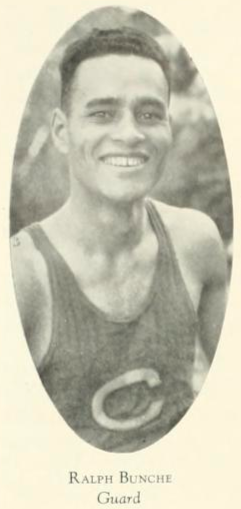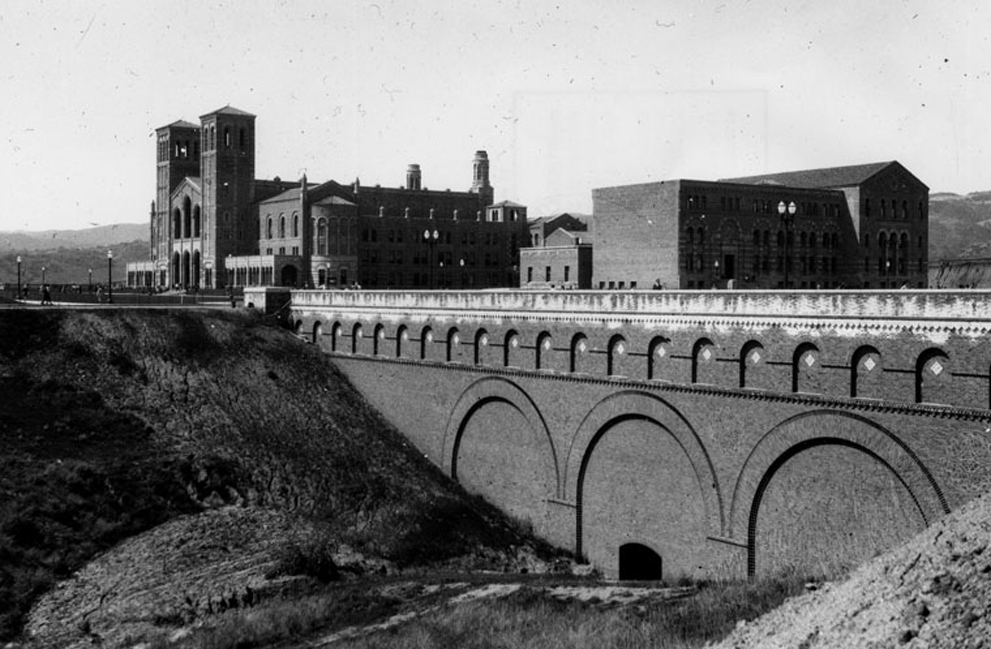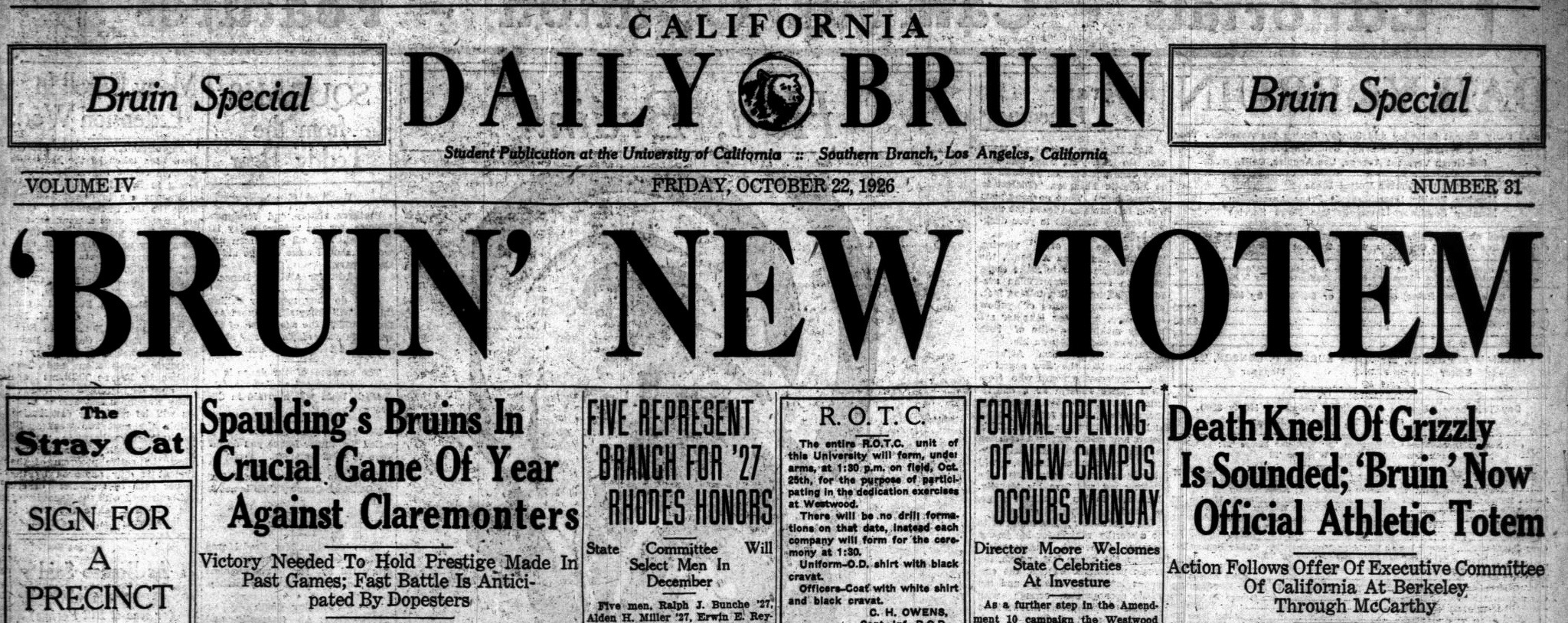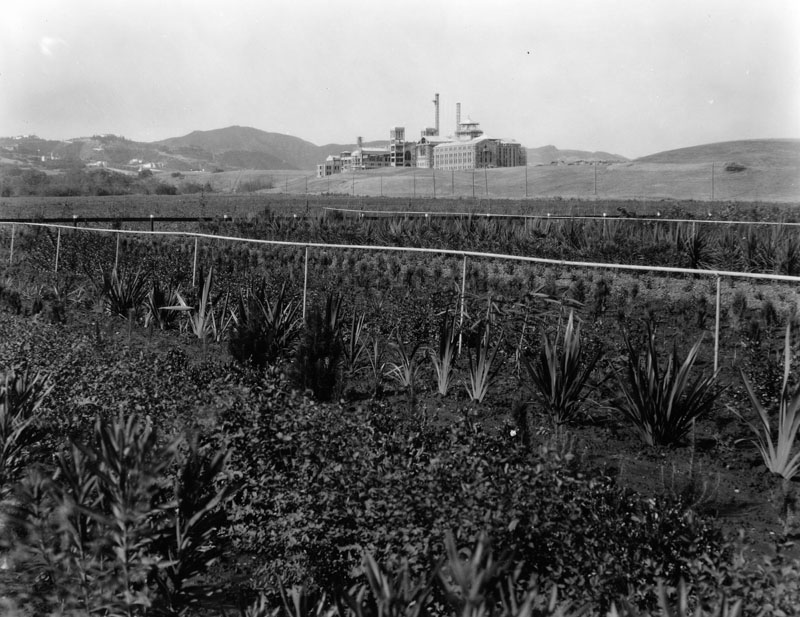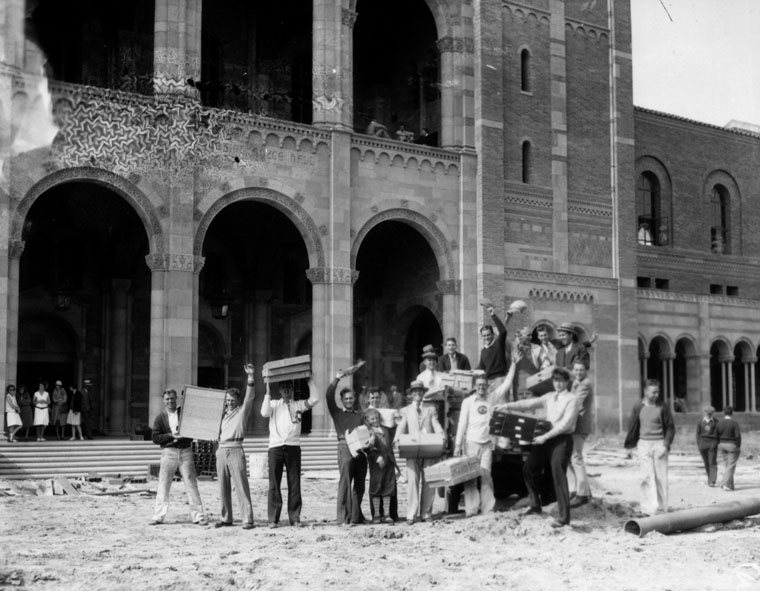In the early 1920s, Los Angeles was surrounded by rolling hills and fields dotted with farmhouses. The decade brought modernization and opportunity, transforming it into a thriving, cosmopolitan city. The population doubled, freeways created urban sprawl and iconic architecture including the Hollywood sign, the Los Angeles Memorial Coliseum and City Hall filled the skyline.
UCLA kept pace with the surging city, transforming itself through will and spirit from a teachers’ college, with an enrollment of a few hundred, into the beginnings of the world-renowned institution we know today. Like Los Angeles, UCLA’s vision stretched beyond the horizon and into the future.
Southern California's rising influence created a demand among Angelenos for a local campus of the University of California. Their advocacy, along with UC Regent Dickson and Southern Branch director Moore, transformed the
State Normal School, a small yet vital teachers’ college,
into the Southern Branch of the University of California. Excited students began classes in the fall of 1920, aware they were building the foundation for an institution that would outpace their wildest dreams.
One early goal was to quickly establish a unified student body, with the first task being to create the Associated Students organization (ASUC, now ASUCLA). Through a
“sure and careful” process, the first Student Body President John McManus ’22 and a “Committee of Twelve” drafted a new
Constitution and Honor Pledge, which were published in the Cub Californian, the school newspaper, on Oct. 17, 1919, and voted on by the student body. The Associated Students led student publications, the bookstore, cafeteria and student government. Their goal was to organize into “a real university, with all the ideals and traditions of which a college is always proud.”
Southern Campus, the yearbook,
celebrated their progress, “In after years these pioneers may say with pride that they were the foundation upon which the spirit and traditions of a great University were founded. Whatever great victories and fame the future may hold, those who have aided in overcoming the difficulties of the past year may say with pride that they were the first.”
As a two-year college, with no juniors and seniors, responsibility for leadership roles fell to freshman and sophomores — from student government to athletics. Southern Branch teams competed, often at a disadvantage, against four-year schools. The 1926 yearbook looked back on these early athletes, “In them was born the fighting spirit which has come to characterize the Blue and Gold of the South"
As the younger sibling to Berkeley’s Bears, sometimes called Bruins, Southern Branch students were called Cubs. In 1924, maybe in part to appear more ferocious, the school changed their nickname to Grizzly. The earliest mascots were live bears; while the crowds loved them, their presence sometimes caused problems.
In a ceremony in June 1923, the first graduates of the Southern Branch received their bachelor of education diplomas. In the Southern Campus, Regent Dickson
addressed them, “It is for you to establish and help maintain at this Southern Branch the ideals of the University of California. Its history and traditions are yours. They call for the best that is in you. Give it.”
In 1924 when, after a fierce campaign from UC Regent Dickson, Southern Branch director Moore and the faculty and student body, the school attained four-year degree status. Celebrating students marched to the quad to form the words “Four Years” surrounded by a giant “C.” Yearbook staff
described the day as holding an essence of foreshadowing, “What the future holds, we dare not venture to guess. We can only set once more a definite ideal and strive constantly for the best and highest.”
A member of the class of 1924, William Ackerman ’24 was the first coach of the men's tennis team, a position he held until 1950, earning UCLA its first NCAA title in any sport. Ackerman was a charter member of the UCLA Athletic Hall of Fame. When he retired in 1967 Ackerman Student Union was named in his honor.
Many of the buildings on campus are
named for the influential pioneers of the 1920s — Rieber Hall, for philosophy professor and dean Charles Henry Rieber, credited as the first to use the initials UCLA; Campbell Hall for Lily Bess Campbell, professor and scholar of Renaissance and Shakespearean literature; Dodd Hall, for economics professor and dean of the College of Letters and Science, Paul A. Dodd; and Franz Hall for professor and first chairman of the UCLA Department of Psychology, Shepherd Ivory Franz. Most notably, Bunche Hall was named for Ralph Bunche ’27, a summa cum laude graduate who played varsity basketball, track and field, debated and wrote for the school newspaper, while working his way through school as a janitor. After graduation, Bunche served in the United Nations and was awarded the Nobel Peace Prize for his work in the Middle East.
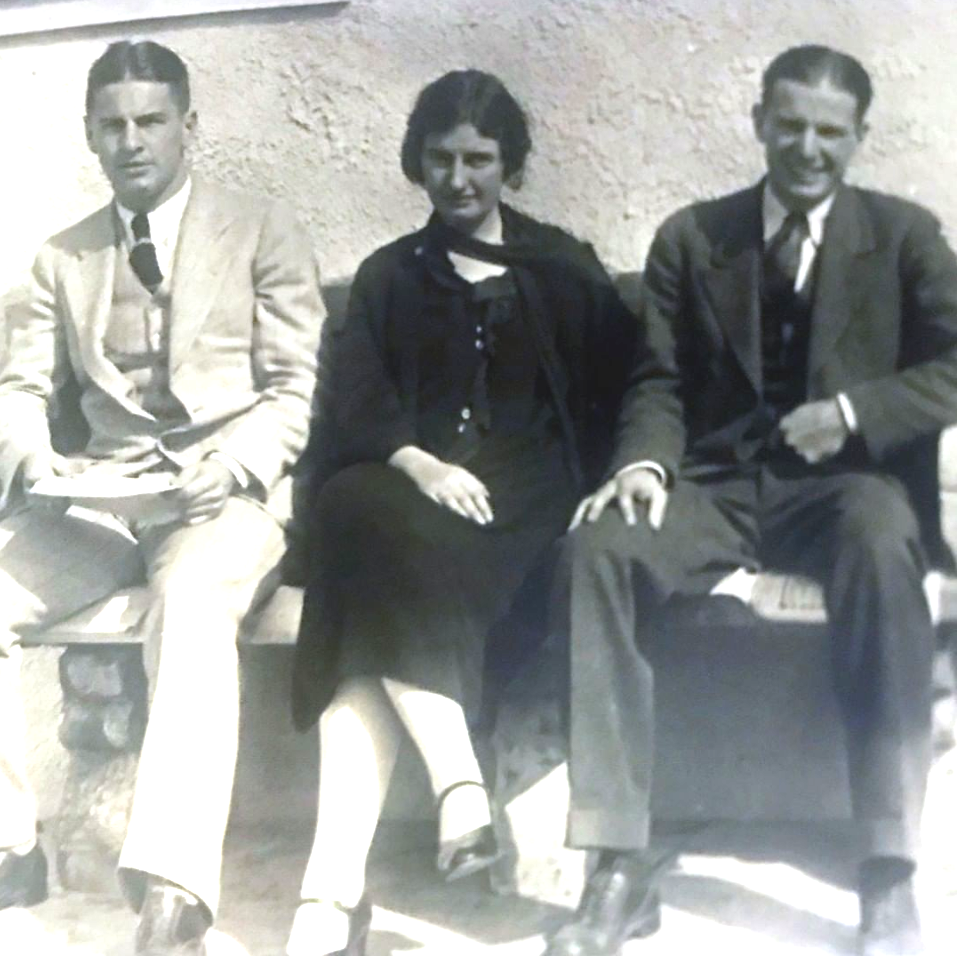
Alumni Association Founders Fred Jordan, Thelma Gibson and Leslie Cummings
In 1925, as UCLA prepared to award its first bachelor of arts degrees, Thelma Gibson ’25 wrote, “We’ll all be graduating soon. We really need some kind of organization to bind us together.” Former student body vice president Gibson and a group of seniors — former student body vice president Elder Morgan ’23, Associated Students president Fred Jordan ’25 and former student body presidents Jerold Weil ’25 and Leslie Cummins ’25 — successfully petitioned Berkeley to form a Southern office of the California Alumni Association, and opened an office in the cafeteria that July. Starting with 200 members that year, the Alumni Association is today a network of more than 500,000 members strong.
As it rose in stature and enrollment, UCLA outgrew its location on Vermont Avenue. After considering locations across Southern California, Regent Dickson favored what would become the university’s current home, “From almost any position on the campus, a view can be had of the Pacific, and the invigorating ocean breezes give to the location a perfect climate...We are building, not for a day, but for all time.”
The Regents agreed, and the Southern Branch became the University of California, Los Angeles. The first structure built on campus was the
Arroyo Bridge. Though hidden today, the bridge spanned a ravine that has since been filled in. Now the road along Dickson Plaza, it made the main campus accessible to construction crew, and soon students. In the fall of 1927 the bridge was dedicated in a ribbon-cutting ceremony with California Governor C.C. Young.
With their athletic teams entering the Pacific Coast Conference, which preceded the Pac-12 Conference, UCLA needed another name too, as the Grizzly moniker had been claimed by the University of Montana. Student leaders at Berkeley voted to give the name
Bruin to UCLA, and the rest is history.
In May 1927 construction began on the university’s first buildings and the surrounding neighborhoods. The California Daily Bruin described the future Westwood Village as a modern shopping district “springing up where only barley fields had been before.”
Move in day took place over Memorial Day weekend in 1929. A police motorcade followed three trucks of furniture, and a caravan of cars decorated in blue and gold streamers from the Vermont Avenue tennis courts to the new campus.
UCLA’s new location meant big changes. With the move out of Hollywood, students had to find transportation to Westwood. While some had cars, many relied on public transportation. Railway companies opened
new bus lines connecting the university to the sprawling city, with discounted ticket books for students. Along with the new campus buildings, fraternity and sorority houses, apartments and rooming homes were being built in Westwood for those who wished to live close by. In the fall of 1929, 10 years after students enrolled at the Southern Branch of the University of California, the first students
entered the halls of the University of California, Los Angeles.
The UCLA of the 1920s shared the energy and ambition of the time — always with an eye on the future. At the close of the decade, the 1929 Southern Campus was dedicated to the people of California, “The Westwood campus rises as the glorious fulfillment of a long cherished dream. In appreciation of this great inheritance we pledge ourselves, not only to preserve its original value, but to increase its substance for those who will follow us.”
